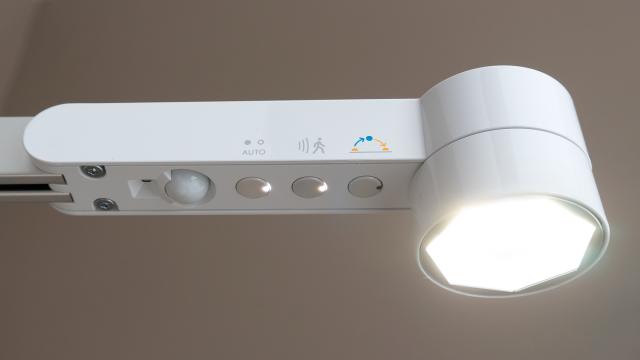Despite being excellent tools for harvesting the free energy the sun is blasting towards our planet all day long, the solar panels you see dotting roofs and blanketing fields don’t really work with artificial light. But as researchers sought out new materials to improve the efficiency of solar photovoltaics, they also discovered these materials could finally be used to harvest light from lamps and other indoor light sources to help power the ever-growing variety of smart devices we rely on.
Solar cells are typically made from pure silicon which doesn’t exist in nature, requiring a purification and refinement process for raw materials like silicon dioxide and quartz. So while solar panels are considered a green source of energy, there’s still an environmental impact as a result of the manufacturing process, which is also expensive, slowing the adoption of solar energy initiatives. To combat this, the industry turned to materials called perovskites to improve the design of solar cells, making them cheaper to manufacture while matching the efficiency of solar cells made from silicon.
Perovskites aren’t a perfect alternative, however. They contain lead, and while we don’t know for sure if the amount of lead a perovskite-based solar panel contains poses a threat (lots of components in gadgets and electronics contain small amounts of lead but are deemed safe for use), in an ideal world we’d eliminate lead altogether. That has led to further research to develop materials that exhibit the same properties and behaviours of perovskites but using elements like bismuth and antimony which are safer for humans and the environment.
To date, while these perovskites-inspired materials have been found to be safer for the environment, they, unfortunately, aren’t as efficient as absorbing sunlight and converting it into usable energy as the real thing. But researchers from the Imperial College London, the University of Cambridge, and Soochow University in China, found that while perovskites-alternatives didn’t respond as well with sunlight, they were surprisingly good at absorbing indoor light which has different properties than the sun’s rays.
Directly powering a gadget with indoor light isn’t a new concept, but it’s been limited to low-power devices like calculators and watches. The loss of efficiency makes silicon-based solar panels not worth adding to larger electronics used mostly indoors. But that could soon change, as the researchers found that some perovskite-inspired materials exhibit a level of efficiency that’s not only promising for commercial applications but have already been used to make cells that can generate enough electricity from artificial light sources to power electronic circuits.
Does it mean that one day the back of your smartphone will be covered in cells allowing it to charge from the light of a desk lamp? Probably not in the near future. If you’ve ever tried to charge your phone during a camping trip using the power of the sun, you know that even a fairly large solar panel will still take hours and hours to fully charge the device, and that’s assuming the sun hasn’t dipped behind a cloud.
Where solar cells made with perovskites-alternatives will excel, however, is for the myriad of smart devices around a home or office that don’t have as much as a demand for power. A smart speaker, for example, isn’t answering questions or playing music all day long, and during the downtime its rechargeable battery could be slowly topped off by harnessing the light from a nearby lamp. Unlike silicon, these new materials could also open up new manufacturing possibilities, allowing them to be integrated into fabrics and plastics so that assuming you don’t work in the Batcave, your smartwatch could charge during the day while you wear it, instead of during the night while you sleep.
